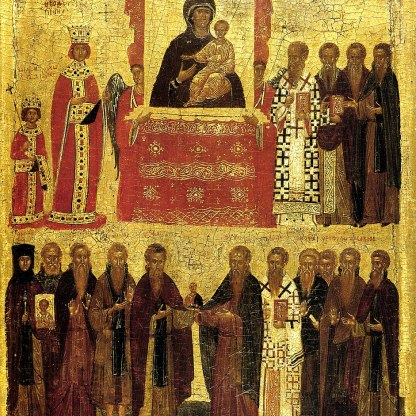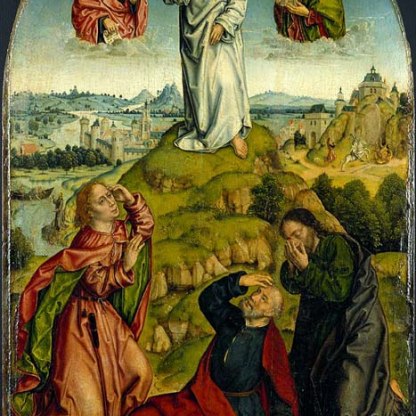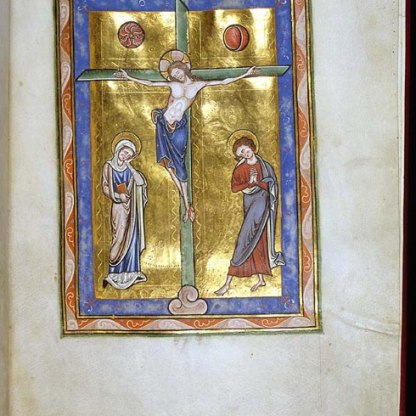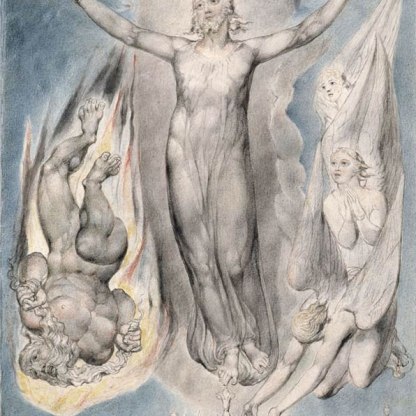Christ Pantokrator

'Very rarely, no never, does it happen that someone comes to us with the wish to become a Christian who has not been struck by some fear of God.' St Augustine, On Catechizing the Uninstructed, 5.9 (400 CE)
This striking image of divine authority was probably carved from the tusk of an African elephant in Constantinople, the capital of the Byzantine empire, towards the end of the tenth century CE. It was produced during a period in which Byzantine art flourished afresh after a fierce debate about religious images had rocked the empire.
In Eastern Christianity the figure of Christ Pantokrator, meaning ‘all-powerful’, or ‘the ruler of all’, is commonly depicted in churches. A huge and severe presence, he often looms over congregations, delivering his blessing and judgment from the interior of the church dome. On the relatively intimate scale of this ivory, the effect is not perhaps quite so startling, yet there is still a somehow awesome sense of power here.
Christ's small eyes with their extraordinary penetrating gaze and heavy lids, his furrowed brow, flaring nostrils and stern mouth, his sheer physical bulk: all instil feelings of reverence, even fear. Those eyes, one feels, see everything, those somewhat protruding ears hear all. And while the book that he holds, clasped shut against his chest, might be a Gospel book, it might equally be the Book of Judgment, in which all our deeds and misdeeds are recorded:
'And I saw the dead, small and great, stand before God; and the books were opened: and another book was opened, which is the book of life: and the dead were judged out of those things which were written in the books, according to their works.'
Revelation, 20, 12.
This image is a long way from the physically drained, broken man painted so beautifully by Guido Reni c.1639, in the Fitzwilliam, below 2546. King and judge, this Byzantine Christ demands obedience. With his flowing, parted hair and imposing beard, he resembles ancient representations of Zeus, the Greek father of the gods, the wielder of the thunderbolt. Right is a cast from a Greek statue of this god, from the Cambridge University Museum of Classical Archaeology.
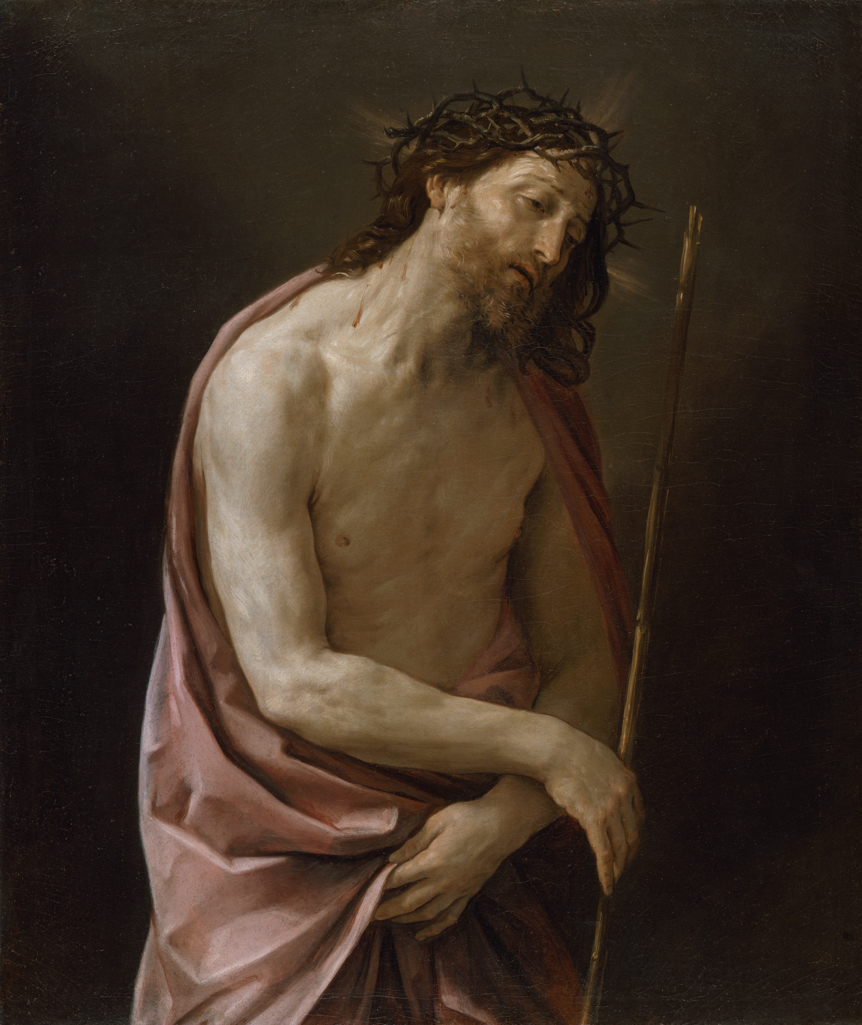
But this is a merciful God. The three limbs of the cross behind him remind the viewer that he lived and died on earth, that he suffered on behalf of mankind. And his right hand, emerging from the folds of his great mantle, is held in a gesture of benediction. This is the priestly blessing used in the Eastern Orthodox Church in which the fingers were intended to form the Greek letters ICXC, an abbreviated form of the name Jesus Christ. It differs slightly from the Western version which we see Christ using in Albert Bouts’ late fifteenth-century Transfiguration in the Fitzwilliam 99.

This ivory is likely to have formed the central part of a triptych – three panels hinged together. It would probably have been flanked by images of John the Baptist to Christ’s left, and the Virgin Mary to his right. The grouping of these three figures in this way is called a deëisis, a Greek word meaning 'petition'. As Christ sits in judgment, the Virgin and Baptist intercede with him on behalf of mankind. The small size here suggests that the triptych was used for private devotion. At some point in its history the panel was cut from its original setting, trimmed at the sides and used as the cover for a book.
Themes and periods
Data from our collections database
Rectangular carved ivory panel. Christ Pantocrator is represented half-length and full-face, wearing a tunic and pallium. He holds a book in his left hand and has his right hand raised in blessing. Behind his head are the three upper limbs of a gemmed cross (crux gemmata), the surfaces chequered in the same way as the book in Christ's hand. Narrow acanthus borders run horizontally along the top and bottom of the panel. There are two holes in the lower border close to the corners, another in the top left of the top border, which also has a split in the middle.
From the 19th century cover of an Ottonian lectionary written at Reichenau (see M.R. James: Cat. of MSS. McClean 30); Barrois Collection, 1901 Barrois - Ashburnham Sale (cat. no. 189); McClean Bequest MS 30
Legal notes
Frank McClean Bequest
Acquisition and important dates
- Method of acquisition: Bequeathed
- Dates: 1904
Dating
This panel was probably part of a triptych, and later had its sides cut down. It came to the Museum on the 19th century cover of an Ottonian lectionary bequeathed by Frank McClean (McClean MS 30) in the Department of Manuscripts and Printed Books. The image of Christ shows him as Lord of All gazing magestically towards the viewer.
Maker(s)
- Unknown Maker
Note
This panel was probably part of a triptych, and later had its sides cut down. It came to the Museum on the 19th century cover of an Ottonian lectionary bequeathed by Frank McClean (McClean MS 30) in the Department of Manuscripts and Printed Books. The image of Christ shows him as Lord of All gazing magestically towards the viewer.
Place(s) associated
- Byzantium
Materials used in production
Read more about this recordStories, Contexts and Themes
Other highlight objects you might like
Suggested Curating Cambridge products
Sign up to our emails
Be the first to hear about our news, exhibitions, events and more…
